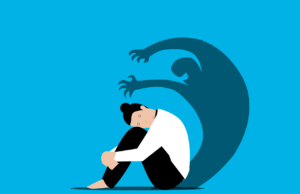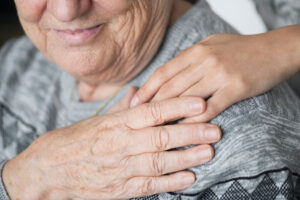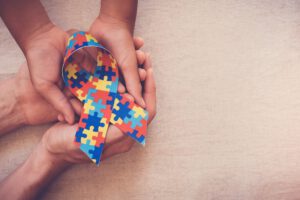What is the Felt Sense?
Eugene Gendlin (2003) the creator of a method he called focusing, coined the term felt sense in his seminal book, Focusing. A felt sense is “a special kind of internal bodily awareness,” that one can learn to be increasingly attuned to, a “body-sense of meaning.” This process involves a physical rather than mental experience, one that consists of “a bodily awareness of a situation or person or event. An internal aura that encompasses everything you feel and know about the given subject at a given time.” Initially, this felt sense of something or someone may remain fuzzy, yet it involves the entire ‘gestalt’ or representation we have of that something or someone. Upon focusing on this body sense and its quality, it may change – a body shift occurs, that allows one to see things differently. For example, when dealing with a problem, its felt sense changes, and we may realize the problem is different from what we had originally thought.
I believe that this conscious bodily awareness can occur only after an innate affect has been triggered (Kelly, 2012; Tomkins, 2008). We have nine such hard-wired affects, which are present since birth (Tomkins, 2008). These include: positive affects (interest-excitement, enjoyment-joy), a neutral affect (surprise-startle), and negative affects (fear-terror, distress-anguish, anger-rage, disgust, dissmell or the automatic response we have when we smell something decayed/rotten, and shame-humiliation). Positive affects motivate us to do something to have them continue, or to get them back, whereas negative ones motivate us to get rid of them (Kelly, 2012; Tomkins, 2008). Affects (and feelings) are comprised of sensations.
Tomkins differentiates between innate affects, which are considered to be biologically-based, and emotions and feelings, which have a learning component, each person experiencing them differently, depending on their autobiography (their memories of previous affect experiences and the patterns or scripts they form, which may be subsumed under development and past history).
Positive and negative affects are at the basis of what Solan (2015) has described as healthy narcissism. She suggested “considering one’s narcissism as an emotional immune system, based on the innate healthy narcissism characteristic of a well-functioning, regulated system.” Healthy narcissism is based on the attraction to the familiar [which gives way to positive affects] and the resisting of the foreign [which gives way to negative affects], processes very similar to those of the biological immune system.” (2015, p. 17, my italics/brackets).
The concept of the felt sense was incorporated by Peter Levine in his own work with somatic experiencing or SE for short, (2010), a body/mind therapy developed for the treatment of stress and trauma. Levine focuses specifically on and works with discrete sensations. For example, if someone were to say they were feeling anxious, the SE therapist might ask them how they knew they were anxious. The client might respond that his heart is pounding and there is a constriction in his chest. He might be asked to choose one of these two sensations to focus on; if, say, he chose the chest constriction, the client might be asked to delineate where in the chest there is a constriction, and/or what images come up with it.
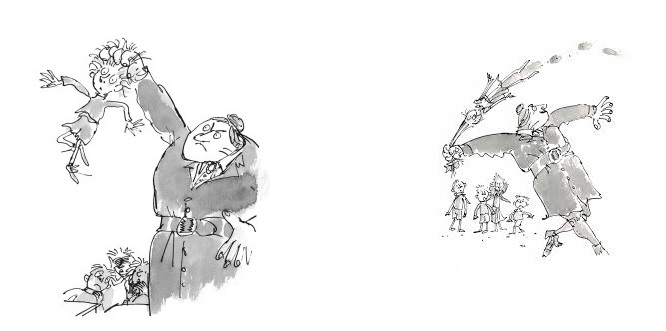
In SE, the client learns to identify and track his or her sensations during the session (and subsequently, in everyday life.) This evolving familiarity with a specific sensation and the subsequent discharge that may ensue once its ‘message’ is understood and acknowledged, is the basic step of the SE dance, necessary before other ‘moves’ can be made. This process of ‘interviewing a sensation’ allows the excess energy attached to the sensation in question to dissolve or be released (discharge), allowing the person to shift their attention to the next sensation they experience.
Additional work is done to re-establish the flow among the various channels that inform our felt sense: by amplifying and elaborating the felt sense of specific sensations – one sensation at a time – a specific sensation may be fleshed out to gradually encompass its attached affect and meaning (including personal nuances of feelings and emotions, scripts, beliefs), sensory images (e.g., olfactory, visual, auditory, tactile, sensorimotor), and behavioral referents. In this context, behavior consists of movements and actions of any kind, whether alone or with others, including actual behaviors and the feeling-tone of scripts and mental representations of self and other in interaction, in object relationship. Once the flow is re-established among the interconnected network of channels characterizing the sensation, it becomes more integrated, both within itself, and with other networks.
The process of discharge, of the welcome release of nervous tension and stress (left-over survival energy) makes it possible for the person to re-connect with their inner resources (which includes their ability to use outer resources) and subsequently, as they become more resilient, to deal more effectively with the challenges he or she is facing in their life. Under certain conditions, a new neural network or pathway may be created in the brain.
An additional, change-promoting process which Peter Levine first observed upon studying animals in the wild, and later adapted in the practice of SE, consists of creating the therapeutic opportunity to complete (or imagine completing) the very movements that our bodies want to perform, that is, thwarted fight/flight movements, which, for a variety of reasons, we were unable to complete when originally faced with a perceived or actual life-threat or other situational stressful event. The body’s “washing machine” (Ross, personal communication) cleans up the system, and allows it to reset. Now, challenges and difficult situations can be met on their own right, without the extra baggage of being mixed up with (over-coupled) with other issues, as often happens.
Sometimes, we unconsciously disconnect or dissociate a piece of what’s bothering us from our conscious awareness because it is too painful to keep in mind (under-coupling). In bodily/physical terms, this material may come up as a frozen part of the body, a sense of numbness, as if it is asleep, or perhaps as a sense of fogginess between the person and the world. During the process of SE therapy, concomitantly with a step-by-step strengthening of the person’s resources and resiliency, a new meaning is created as the various disparate channels of the felt sense come together, coalescing to form a new kinetic melody. This may take the form of the client now completing a hitherto incomplete (thwarted) movement of a fight or flight sequence. This completion allows the brain to step out of the ’emergency mode’ in which it had been ‘stuck,’ even though the precipitating traumatic event (e.g., a car crash or assault, an acute life crisis) may well have been ‘objectively’ over. This gradual process leads to a settling of the body, a new reorganization that restores an innate balance that was disturbed by the stresses of trauma.
Resiliency and Resources
Resiliency means “the ability to recover readily from illness, depression, adversity, or the like; buoyancy.” The Latin root means ‘to spring back’.
My assumption is that the capacity for resiliency is affected by one’s formative experiences, especially during early childhood. Optimally, the legs it stands on include: a healthy narcissism (Solan, 2015) that safeguards the familiarity of the self and is characterized by a sense of continuity, self-integrity, well-being and self-esteem; effective emotional self-regulation; and attachment experiences (object relations) involving jointness-separateness (Solan, 2015) and experiences of safety.
We can remind our autonomous nervous system (ANS) to ‘spring back’ and resume the kind of functioning best described by a steady sine wave where charge is followed by discharge which is then followed by charge and so forth. For our ANS to demonstrate
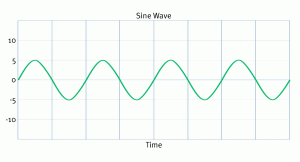
elasticity and flexibility (as opposed to rigidity and stuckness), we must nourish it, that is, feed it with resources, with things that make us feel good without having a price attached (as do smoking, alcohol and so forth). The way we do this is by learning to notice and appreciate both inner and outer resources, and to celebrate them by anchoring them in our body – taking a moment to experience the sensations that arise within us upon contemplating a specific resource, say a rose or a Bach Fugue, or completing a project. Our well-being and satisfaction have bodily referents – perhaps we will take a deep organic breath and feel a tingling excitement in our chest, sit up in our chair, feel energized or break into a spontaneous jig. Making a point of noticing and focusing on these bodily sensations is what I mean by anchoring them in the body.
Resources are interminable, if you learn how to identify them in your life. Hearing a bird outside, looking at the sky, touching a pebble you once collected, winking at your cat, having coffee with a friend, preparing a favorite dish, remembering how you dealt with a challenge you faced–need I go on? As I write this, the song, My Favorite Things, as sung by Julie Andrews comes to mind. (Since I am not sure it is permissible to reproduce the YouTube link here, you can easily Google it.)
You may even invest in purchasing a colorful hard-cover notebook that is hard to misplace, and begin your very own inventory of your resources. When feeling down or uninspired, you can simply leaf through, and re-connect with resources you once took the trouble to record (Trainin, personal communication). Make sure you notice how your body and mind respond to the resources you consider.

Resources “remind our nervous system of its ability to self-regulate and activate our coping abilities.” (Ross, 2008, p. 52). A healing vortex that is strong allows us to process and to some extent renegotiate our traumatic experiences, integrating them into our life in such as way that we become better able to manage our feelings, and to regain safety and a sense of well-being.
The more time you spend in a resource-mode, the greater the container or healing vortex (Ross, 2008) you are building. According to Ross, who wrote a book entitled, Beyond the Trauma Vortex into the Healing Vortex, the healing vortex is “our innate capacity to cope and heal from tragedy” (2008, p. 52). The word ‘vortex’ brings to mind a whirlpool or tornado, whose concentric circles are ever-widening; the flow is around an axis that may be straight or curved; we are pulled toward a vortex or swept along by it. It has a magnetic force.
The curious thing about vortices is that both the healing vortex and the trauma vortex are triggered in our nervous system at the same time (Ross, 2008). Levine described this as the ‘polarity principle’, whereby one invokes the other. If you focus long enough on the healing vortex, it will lead to the trauma vortex, and vice versa. That is why it is important to limit the time you are in the healing vortex, so it doesn’t sweep you into the trauma vortex. But, should this occur, and you begin to feel a sense of constriction or an unpleasant sensation, try shifting your attention and focusing momentarily on the healing vortex by noticing a pleasant sensation in some area of your body (even if small, like the tip of your nose) or thinking of a pleasant moment (resource) and its attendant sensations and feelings of expansion. (Once you undergo SE, you will learn additional ways to help dissolve and discharge the sensations of constriction associated with the trauma vortex.)
A Grounding Exercise
If necessary, look around you and take in your surroundings, feel your feet on the ground as the soles touch the floor, and, if sitting down, notice the support the chair/couch offers your sitting bones and back. Enjoy this for a moment, and then, look around you and count ten things with a certain shape or color–this activates and brings your neocortex ‘online’ and takes you out of your felt sense (Ross, 2008).

References
Gendlin, E. (2003). Focusing. New York: Bantam Dell.
Kelly, V. (2012). A Primer of Affect Psychology. Reprinted in The Art of Intimacy and the Hidden Challenge of Shame. Rockland, ME: Maine Authors Publishing.
Levine, P. (2010). In an Unspoken Voice: How the Body releases Trauma and Restores Goodness. Berkley, CA: North Atlantic Books.
Ross, G. (2008). Beyond the Trauma Vortex Into the Healing Vortex. A Guide for Psychology and Education. Los Angeles, CA: International Trauma-Healing Institute.
Solan, R. (2015). The Enigma of Childhood. The Profound Impact of the First years of Life on Adults as Couples and Parents. London: Karnac.
Tomkins, S. (2008). Affect, Imagery, Consciousness (Vol. I) The Complete Edition. New York: Springer.


